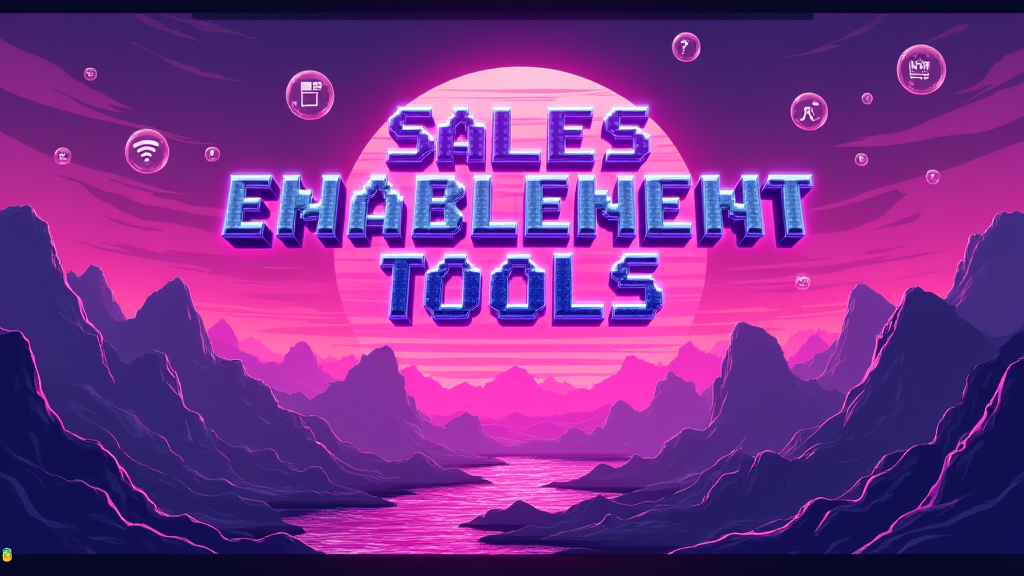Sales Enablement Tools: Empowering Sales Teams

Published on: October 01, 2024
In today's competitive business landscape, equipping your sales team with the right resources is crucial for success. Sales enablement tools are the powerhouse behind high-performing sales organizations, providing the necessary support to streamline processes, enhance productivity, and ultimately drive revenue growth. 🚀
Sales enablement tools are software applications and platforms designed to help sales teams work more efficiently and effectively. These tools provide sales representatives with the resources, content, and training they need to engage prospects, close deals, and achieve their targets. By leveraging these tools, organizations can bridge the gap between sales and marketing, ensuring that both teams are aligned in their efforts to drive business growth.
Effective sales enablement tools typically offer a range of features to support various aspects of the sales process:
Incorporating sales enablement tools into your sales and marketing stack can yield numerous advantages:
While there are numerous options available in the market, some widely-used sales enablement tools include:
To maximize the benefits of sales enablement tools, consider the following best practices:
By leveraging the power of sales enablement tools, organizations can empower their sales teams to perform at their best, ultimately driving revenue growth and business success. 💼💰
As you evaluate your current sales processes and consider implementing sales enablement tools, ask yourself:
1. What are the biggest challenges our sales team faces in their day-to-day activities?
2. How well-aligned are our sales and marketing efforts?
3. What types of content do our sales reps use most frequently, and how easily can they access it?
4. How do we currently measure the effectiveness of our sales enablement efforts?
5. What specific features would have the most significant impact on our sales team's productivity and performance?
By answering these questions, you'll be better equipped to choose the right sales enablement tools that address your organization's unique needs and drive sustainable growth.
Sales enablement tools are software applications and platforms designed to help sales teams work more efficiently and effectively. These tools provide sales representatives with the resources, content, and training they need to engage prospects, close deals, and achieve their targets. By leveraging these tools, organizations can bridge the gap between sales and marketing, ensuring that both teams are aligned in their efforts to drive business growth.
Key Features of Sales Enablement Tools
Effective sales enablement tools typically offer a range of features to support various aspects of the sales process:
- Content Management: Centralized repositories for storing and organizing sales collateral, presentations, and other marketing materials.
- Learning and Training: Interactive platforms for onboarding new sales reps and providing ongoing skill development.
- Analytics and Reporting: Dashboards and reports to track sales performance, content usage, and other key metrics.
- CRM Integration: Seamless connection with Customer Relationship Management systems for improved data management and workflow.
- Collaboration Tools: Features that facilitate communication and knowledge sharing among team members.
- AI-Powered Insights: Advanced analytics and recommendations to guide sales strategies and tactics.
Benefits of Implementing Sales Enablement Tools
Incorporating sales enablement tools into your sales and marketing stack can yield numerous advantages:
- Increased Productivity: Streamline workflows and automate repetitive tasks, allowing sales reps to focus on high-value activities.
- Improved Sales Performance: Provide reps with the right content and insights at the right time, leading to more effective customer interactions. Learn more about improving sales performance.
- Enhanced Onboarding: Accelerate the ramp-up time for new hires with structured training and easy access to resources.
- Better Alignment: Foster collaboration between sales and marketing teams, ensuring consistent messaging and strategy.
- Data-Driven Decision Making: Leverage analytics to identify trends, optimize processes, and make informed strategic decisions.
Popular Sales Enablement Tools
While there are numerous options available in the market, some widely-used sales enablement tools include:
| Tool | Key Features |
|---|---|
| Salesforce Sales Cloud | CRM integration, analytics, mobile access |
| HubSpot Sales Hub | Email tracking, meeting scheduling, document management |
| Seismic | Content management, personalization, analytics |
| Highspot | AI-powered content recommendations, sales playbooks |
| Showpad | Content activation, training, coaching |
Implementing Sales Enablement Tools Successfully
To maximize the benefits of sales enablement tools, consider the following best practices:
- Clearly define your sales enablement strategy and objectives. For more details, check our guide on sales enablement strategy.
- Involve both sales and marketing teams in the tool selection process.
- Ensure proper integration with existing systems and workflows.
- Provide comprehensive training and ongoing support for users.
- Regularly review and optimize your sales enablement processes.
By leveraging the power of sales enablement tools, organizations can empower their sales teams to perform at their best, ultimately driving revenue growth and business success. 💼💰
Questions to Consider for Your Sales Stack
As you evaluate your current sales processes and consider implementing sales enablement tools, ask yourself:
1. What are the biggest challenges our sales team faces in their day-to-day activities?
2. How well-aligned are our sales and marketing efforts?
3. What types of content do our sales reps use most frequently, and how easily can they access it?
4. How do we currently measure the effectiveness of our sales enablement efforts?
5. What specific features would have the most significant impact on our sales team's productivity and performance?
By answering these questions, you'll be better equipped to choose the right sales enablement tools that address your organization's unique needs and drive sustainable growth.
















